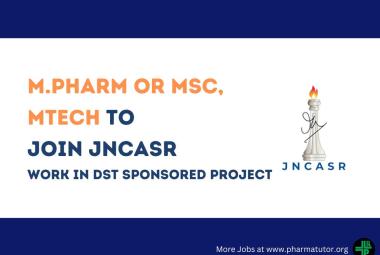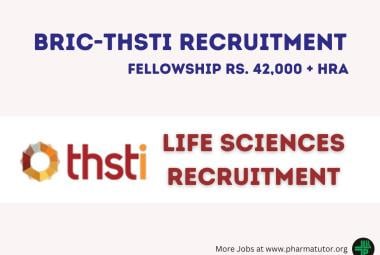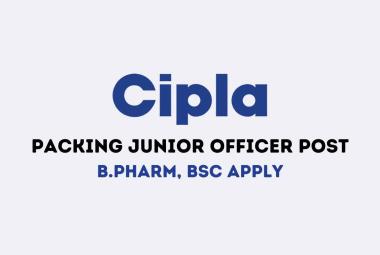 About Authors:
About Authors:
Patel Chirag J1*, Satyanand Tyagi2
1Maharishi Arvind Institute of Pharmacy, Department of Pharmaceutics, Jaipur, Rajasthan.
2President, Tyagi Pharmacy Association & Scientific Writer (pharmacy), Chattarpur, New Delhi, India.
*chirag.bangalore@gmail.com, +918000501871
ABSTRACT
The basic rationale of sustained release drug delivery system optimizes the biopharmaceutical, pharmacokinetic and pharmacodynamic properties of a drug in such a way that its utility is maximized, side-effects are reduced and cure of the disease is achieved. There are several advantages of sustained release drug delivery over conventional dosage forms like improved patient compliance due to less frequent drug administration, maximum utilization of the drug, increased safety margin of potent drug, reduction of fluctuation in steady-state drug levels, reduction in healthcare costs through improved therapy and shorter treatment period.Presently pharmaceutical industries are focusing on development of sustained release formulations due to its inherent boons.Wide varieties of polymers are available for retarding the release rate of drugs hence sustains the action of drugs. This article contains the basic information regarding sustained-release formulation, its advantages, different types, and characteristics involved in oral sustained-release dosage form design.
Reference Id: PHARMATUTOR-ART-1496
Introduction:
The advantage of administering a single dose of a drug that is released over an extended period of time instead of numerous doses is now a day’s area of interest for formulation scientists in Pharmaceutical industry1, 2.Matrix system is the release system which prolongs and controls the release of the drug, which is dissolved or dispersed. A matrix is defined as a well-mixed composite of one or more drugs with gelling agent i.e. hydrophilic polymers. Introduction of matrix tablet as sustained release (SR) has given a new breakthrough for novel drug delivery system in the field of Pharmaceutical technology. It excludes complex production procedures such as coating and pelletization during manufacturing and drug release rate from the dosage form is controlled mainly by the type and proportion of polymer used in the reparations. Hydrophilic polymer matrix is widely used for formulating an SR dosage form3. SR constitutes any dosage form that provides medication over an extended time or denotes that the system is able to provide some actual therapeutic control whether this is of a temporal nature, spatial nature or both. SR system generally do not attain zero order type release and usually try to mimic zero order release by providing drug in a slow first order. Repeat action tablet are an alternative method of sustained release in which multiple doses of drug are an alternative method of sustained release, in which, multiple doses are contained within a dosage form and each dose is released at a periodic interval. Delayed release system, in contrast, may not be sustaining, since often the function of these dosage forms is to maintain the drug in the dosage for some time before release, for example. Enteric coated tablet. The ideal way of providing an exact amount of drug at the site of action for a precise time period is usually approximated by most systems. This approximation is achieved by creating a constant concentration in the body or an organ over an extended time; in other words, the amount of drug entering the system is equivalent to the amount of drug removed from the system4,5.
SR dosage forms continue to draw attention in the search for improved patient compliance and decreased incidences of adverse drug reactions. Ideally, a sustained release dosage form will provide a therapeutic concentration of the drug in the blood that is maintained throughout the dosing interval with a reduction in a peak concentration ratio6,7. Numerousdrug delivery techniques have been developed to sustain the release of drugs, including triple-layered tablets (Geomatrix® technology) and osmotic pumps with laser drilled holes (OROS® technology). These technologies are intricate and relatively expensive to manufacture. Thus, there remains an interest in developing novel formulations that allow for sustained release of drugs using readily available, inexpensive excipients8. Numerous SR oral dosage forms such as membrane controlled system, matrices with water soluble/insoluble polymers or waxes and osmotic systems have been developed, intense research has recently focused on the designation of SR systems for poorly water soluble drugs9,10.
DISADVANTAGES OF CONVENTIONAL DOSAGE FORMS3,11, 12
1. A typical peak-valley plasma concentration time profile is obtained which makes attainment of steady-state condition difficult.
2. The unavoidable fluctuations of drug concentration may lead to under medication or over medication.
3. Poor patient compliance, increased chances of missing the dose of a drug with short half-life for which frequent administration is necessary.
4. The fluctuations in drug levels may lead to precipitation of adverse effects especially of a drug with small Therapeutic Index whenever over medication occur.
ADVANTAGES OF SUSTAIN RELEASE FORMULATION3,8,13
1. Better patient compliance
2. Reduction in frequency of intakes
3. Reduce side effects
4. Uniform release of drug over time
NOW YOU CAN ALSO PUBLISH YOUR ARTICLE ONLINE.
SUBMIT YOUR ARTICLE/PROJECT AT articles@pharmatutor.org
Subscribe to Pharmatutor Alerts by Email
FIND OUT MORE ARTICLES AT OUR DATABASE
ORAL CONTROLLED RELEASE SYSTEMS
The controlled release systems for oral use are mostly solids and based on dissolution, diffusion or a combination of both mechanisms in the control of release rate of drug. Depending upon the manner of drug release, these systems are classified as follows:
1. continuous release systems
2. Delayed transit and continuous release systems
3. Delayed release systems
1. Continuous release systems
Continuous release systems releasethe drug for a prolonged period of time along the entire length of gastrointestinal tract with normal transit of the dosage form. The various systems under this category are as follow:
I. Dissolution controlled release systems
II. Diffusion controlled release systems
III. Dissolution and diffusion controlled release systems
IV. Osmotic pressure controlled systems
V. Ion exchange resin- drug complexes
VI. pH-independent formulation8
Dissolution-controlled release systems3:
The drug present in such system may be the one:
i. Having high aqueous solubility and dissolution rate
ii. With inherently slow dissolution rate e.g. Griseofulvin and Digoxin
iii. That produces slow dissolving forms, when it comes in contact with GI fluids
Dissolution- controlled release can be obtained by slowing the dissolution rate of a drug in the GI medium, incorporating the drug in an insoluble polymer and coating drug particles or granules with polymeric materials of varying thickness. The rate limiting step for dissolution of a drug is the diffusion across the aqueous boundary layer. The solubility of the drug provides the source of energy for drug release, which is countered by the stagnant-fluid diffusional boundary layer. The rate of dissolution (dm/dt) can be approximated by following equation:
dm ADS
----- = --------
dt h
Where,
A = Surface area of the dissolving particle or tablet
D = Diffusivity of the drug
S = Aqueous solubility of the drug
h = Thickness of the boundary layer
The two types of dissolution-controlled release are:
A. Matrix (or monolith) dissolution controlled systems
B. reservoir dissolution controlled systems
Diffusion controlled release systems3,11,12:
In this type of systems, the diffusion of dissolved drug through a polymeric barrier is a rate limiting step. The drug release rate is never zero-order, since the diffusional path length increases with time as the insoluble matrix is gradually depleted of drug. Diffusion of a drug molecule through a polymeric membrane forms the basis of these controlled drug delivery systems. Similar to the dissolution-controlled systems, the diffusion-controlled devices are manufactured either by encapsulating the drug particle in a polymeric membrane or by dispersing the drug in a polymeric matrix. Unlike the dissolution-controlled systems, the drug is made available as a result of partitioning through the polymer. In the case of a reservoir type diffusion controlled device, the rate of drug released (dm/dt) can be calculated using the following equation:
dm ?c
--- = ADK ----
dt L
Where,
A = Area
D = Diffusion coefficient
K = Partition coefficient of the drug between the drug core and the membrane
L = Diffusion path length and
C = Concentration difference across the membrane
In order to achieve a constant release rate, all of the terms on the right side of equation must be held constant. It is very common for diffusion controlled devices to exhibit a non-zero-order release rate due to an increase in diffusional resistance and a decrease in effective diffusion area as the release proceeds. Another configuration of diffusion-controlled systems includes matrix devices, which are very common because of ease of fabrication. Diffusion control involves dispersion of drug in either a water-insoluble or a hydrophilic polymer. The release rate is dependent on the rate of drug diffusion through the matrix but not on the rate of solid dissolution.
The two types of diffusion-controlled release are:
A. matrix diffusion controlled systems
B. Reservoir devices
Dissolution and diffusion controlled release systems11:
In such systems, the drug core is encased in a partially soluble membrane. Pores are thus created due to dissolution of parts of the membrane which permit entry of aqueous medium into the core and hence drug dissolution and allow diffusion of dissolved drug out of the system.
Osmotic pressure controlled systems12:
A semipermeable membrane is placed around the tablet, particle or drug solution that allows transport of water into tablet with eventual pumping of drug solution out of the tablet through the small delivery aperture in tablet core. Two type of osmotic pressure controlled systems are:
a. Type 1 contains an osmotic core with drug
b. Type 2 contains the drug in flexible bag with osmotic core surrounding
By optimizing formulation and processing factor, it is possible to develop osmotic system to deliver the drug of diverse nature at preprogrammed rate.
Ion exchange resin-drug complexes13:
It is based on formulation of drug resin complex formed when ionic solution is kept in contact with ionic resins. The drug from this complex gets exchanged in gastrointestinal tract and released with excess of Na+ and Cl- present in gastrointestinal tract. This system generally utilize resin compound of insoluble cross linked polymer. They contain salt forming function group in repeating position on a polymer chain.
pH-independent formulation14:
Most of the drug are either weak acid or weak base, the release from sustain release formulation is pH dependent. However, buffer such as salt of citric acid, amino acid, tartaric acid can be added to the formulation, to help to maintain to constant pH their by retarding pH independent drug release. A buffer sustain release formulation is prepared by mixing a basic or acidic drug one or more buffering agent, granulating with appropriate excipients and coating with gastrointestinal fluid permeable film forming polymer. When gastrointestinal fluid permeates through the membrane, the buffering agent adjusts the fluid inside to suitable constant pH there by rendering a constant rate of drug release.
2. Delayed transit and continuous release systems3,7
These systems are designed to prolong their residence in the GI tract along with their release. Often the dosage form is fabricated to detain in the stomach and hence the drug present therein should be stable to gastric pH. Systems included in this category are mucoadhesive systems and size based systems.
3. Delayed release systems3
The design of such systems involves release of drug only at specific site in the GIT. The drugs contained in such a system are those that are:
a. Known to cause gastric distress
b. Destroyed in the stomach or by intestinal enzymes
c. Meant to extent local effect at a specific GI site
d. Absorbed from a specific intestinal site
The two types of delayed release systems are:
1. Intestinal release systems
2. Colonic release systems
CHARACTERISTICS THAT MAKE DRUGS UNSUITABLE FOR SUSTAIN RELEASE FORMULATION
A. Short elimination half-life (< 2 hours)
B. Long elimination half-life (> 8 hours)
C. Low or slow solubility
D. Poor absorption
E. Extensive first-pass clearance
F. Large doses
G. Narrow therapeutic index7,8,15
CHARACTERISTICS THAT MAKE DRUGS SUITABLE FOR SUSTAIN RELEASE FORMULATION
Two characteristicsinvolved in oral sustained-release dosage form design.
A. Biological characteristics
B. Physicochemical characteristics
NOW YOU CAN ALSO PUBLISH YOUR ARTICLE ONLINE.
SUBMIT YOUR ARTICLE/PROJECT AT articles@pharmatutor.org
Subscribe to Pharmatutor Alerts by Email
FIND OUT MORE ARTICLES AT OUR DATABASE
A. Biological characteristics
Absorption:
Since the purpose of forming a SR product is to place control on the delivery system, it is necessary that the rate of release is much slower than the rate of absorption. If we assume that the transit time of most drugs in the absorptive areas of the GI tract is about 8-12 hours, the maximum half-life for absorption should be approximately 3-4 hours; otherwise, the device will pass out of the potential absorptive regions before drug release is complete. Thus corresponds to a minimum apparent absorption rate constant of 0.17-0.23 h-1 to give 80-95% over this time period. Hence, it assumes that the absorption of the drug should occur at a relatively uniform rate over the entire length of small intestine. For many compounds this is not true. If a drug is absorbed by active transport or transport is limited to a specific region of intestine, SR preparation may be disadvantageous to absorption. One method to provide sustaining mechanisms of delivery for compounds tries to maintain them within the stomach. This allows slow release of the drug, which then travels to the absorptive site. These methods have been developed as a consequence of the observation that co-administration results in sustaining effect. One such attempt is to formulate low density pellet or capsule. Another approach is that of bioadhesive materials8,16.
Biological half life:
The usual goal of an oral SR product is to maintain therapeutic blood levels over an extended period of time. To achieve this, drug must enter the circulation at approximately the same rate at which it is eliminated. The elimination rate is quantitatively described by the half-life (t1/2). Each drug has its own characteristic elimination rate, which is the sum of all elimination processes, including metabolism, urinary excretion and all over processes that permanently remove drug from the blood stream. Therapeutic compounds with short half-life are generally are excellent candidate for SR formulation, as this can reduce dosing frequency. In general, drugs with half-lives shorter than 2 hours such as furosemide or levodopa are poor candidates for SR preparation. Compounds with long half-lives, more than 8 hours are also generally not used in sustaining form, since their effect is already sustained. Digoxin and phenytoin are the examples8,17.
Metabolism:
Drugs those are significantly metabolized before absorption, either in the lumen or the tissue of the intestine, can show decreased bioavailability from slower-releasing dosage form. Even a drug that is poorly water soluble can be formulated in SR dosage form. For the same, the solubility of the drug should be increased by the suitable system and later on that is formulated in the SR dosage form. But during this the crystallization of the drug, that is taking place as the drug is entering in the systemic circulation, should be prevented and one should be cautious for the prevention of the same8,9.
B. Physicochemical characteristics
Dose size:
For orally administered systems, there is an upper limit to the bulk size of the dose to be administered. In general, a single dose of 0.5- 1.0g is considered maximal for a conventional dosage form. This also holds for sustained release dosage form. Compounds that require large dosing size can sometimes be given in multiple amounts or formulated into liquid systems. Another consideration is the margin of safety involved in administration of large amount of a drug with a narrow therapeutic range2.
Partition Coefficient:
When a drug is administered to the GI tract, it must cross a variety of biological membranes to produce a therapeutic effect in another area of the body. It is common to consider that these membranes are lipidic; therefore the partition coefficient of oil-soluble drugs becomes important in determining the effectiveness of membrane barrier penetration. Compounds which are lipophilic in nature having high partition coefficient are poorly aqueous soluble and it retain in the lipophilic tissue for the longer time. In case of compounds with very low partition coefficient, it is very difficult for them to penetrate the membrane, resulting in poor bioavailability. Furthermore, partitioning effects apply equally to diffusion through polymer membranes. The choice of diffusion-limiting membranes must largely depend on the partitioning characteristics of the drug8,9.
Ionization, pka and aqueous solubility:
Most drugs are weak acids or bases. Since the unchanged form of a drug preferentially permeates across lipid membranes, it is important to note the relationship between the pkaof the compound and the absorptive environment. Presenting the drug in an unchanged form is advantageous for drug permeation. Unfortunately, the situation is made more complex by the fact that the drug’s aqueous solubility will generally be decreased by conversion to unchanged form. Delivery systems that are dependent on diffusion or dissolution will likewise be dependent on the solubility of the drug in aqueous media. These dosage forms must function in an environmentof changing pH, the stomach being acidic and the small intestine more neutral, the effect of pH on the release process must be defined. Compounds with very low solubility (<0.01 mg/ml) are inherently sustained, since their release over the time course of a dosage form in the GI tract will be limited by dissolution of the drug. So it is obvious that the solubility of the compound will be poor choices for slightly soluble drugs, since the driving force for diffusion, which is the drug’s concentration in solution, will be low2,17,18.
Stability:
Orally administered drugs can be subject to both acid-base hydrolysis and enzymatic degradation. Degradation will proceed at a reduced rate for drugs in solid state; therefore, this is the preferred composition of delivery for problem cases. For the dosage form that are unstable in stomach, systems that prolong delivery over entire course of transit in the GI tract are beneficial; this is also true for systems that delay release until the dosage form reaches the small intestine. Compounds that are unstable in small intestine may demonstrate decreased bioavailability when administered from a sustaining dosage form. This is because more drugs is delivered in the small intestine and, hence, is subject to degradation. Propentheline and probanthine are representative example of such drug18,19,20.
CONCLUSION
Many drugs are formulated now in a variety of different per oral extended-release dosage forms. However, only those which result in a significant reduction in dose frequency and/or a reduction in toxicity resulting from high concentration in the blood or gastrointestinal tract are likely to improve therapeutic outcomes. To be a successful extended-release product, the drug must be released from the dosage form at a predetermined rate, dissolve in the gastrointestinal fluids, maintain sufficient gastrointestinal residence time, and may be absorbed at a rate and will replace the amount of drug being metabolized and excreted. In a nut shell, sustained-release formulations are a promising way to improve the patient’s compliance by reducing dosing intervals and minimizing adverse effects.The advantages of sustain released dosage form is that they can often be taken less frequently than conventional formulation of same drug, helpful in increasing the efficiency of drug and they keep steadier levels of drug in the blood stream. All this sustain release formulation comes with reasonable cost. Difference between sustained and controlled release is that controlled release is perfectly zero order release that is drug release with time irrespective of concentration. On the other hand, sustained release implies slow release of drug over a time period. Sustain released formulation may or may not be controlled release. It can be easily conclude that development of sustained release dosage form which will prolong the drug release leading to minimize the peak and valley effect in plasma and provide patients compliance.
REFERENCES
1. Reddy KR, Mutalik S, Reddy S, Once daily sustained release matrix tablets of nicorandil: formulation and in vitro evaluation, AAPS Pharm. Sci Tech, 2003, 4: 1-9.
2. Modi SA, Gaikwad PD, Bankar VH and Pawar SP, Sustained release drug delivery system: a review, IJPRD, 2011, 2(12): 147-160.
3. Mandal S, Ratan GN, Mulla JS, Thimmasetty J and Kaneriya A, Design and In Vitro Evaluation of Gastro Retentive Sustained Release Tablets of Tizanidine Hydrochloride, Indian Journal of Novel Drug delivery, 2010, 2(4): 144-152.
4. Swarbrick J and Boylon JC, Encyclopedia of Pharmaceutical Technology, 2nd ed., Marcel Dekker Inc., New York, 2002, 610.
5. Lee BJ, Ryu SG, Cui JH, Formulation and release characteristics of hydroxypropyl methylcellulose matrix tablet containing melatonin, Drug Dev Ind Pharm, 1999; 25: 493-501.
6. Jantzen GM and Robinson JR, Sustained and controlled-release drug delivery systems, In Banker GS, Rhodes CT (Eds.) Modern Pharmaceutics, Third Ed., Revised and Expanded, Drugs and The Pharmaceutical Sciences, vol 72. Marcell Dekker, Inc., New York, 1995, 575-609.
7. Prajapati ST, Patel LD, Patel DM, Gastric floating matrix tablets: Design and optimization using combination of polymers, Acta Pharm., 2008, 58: 221-229.
8. Chugh I, Seth N, Rana AC and Gupta S. Oral sustained release drug delivery system: an overview, IRJP, 2012, 3(5): 57-62.
9. Popli H and Sharma SN, Trends in oral sustained release formulation-I, The Eastern Pharmacist, 1989, 32: 99-103.
10. Vidyadhara S, Rao PR, Prasad JA, Formulation and evaluation of Propranolol hydrochloride oral controlled release matrix tablets. Indian J Pharm Sci, 2004, 66: 188-192.
11. Dusane AR, Gaikwad PD, Bankar VH and Pawar SP, A review on: Sustained released techanology, IJRAP, 2011, 2(6): 1701-1708.
12. Thakor RS, Majmudar FD, Patel JK and Rajpit JC, Review: osmotic drug delivery systems current scenario, Journal of Pharmacy Research, 2010, 3(4): 771-775.
13. Brahmankar VR and Jaishwal SB. Controlled release medication. 1st ed., In: Biopharmaceutical and pharmacokinetics - A Treatise, 1st ed., Vallabh prakashan, 347-353.
14. Gupta P, Vermani K and Garg S, Hydrogels: From controlled release to pH-responsive drug delivery, Drug Discov. Today, 2002, 7: 569-579.
15. Salsa T, Veiga F, Pina ME, Oral controlled-release dosage forms. I. Cellulose ether polymers in hydrophilic matrices. Drug Dev Ind Pharm, 1997, 23: 931.
16. Shirwaikar AA, Jacob S and Grover V, Formulation and evaluation of sustained release tablets using an insoluble resin matrix system, Indian J. Pharm. Sci., 2005, 67(1): 80-83.
17. Robinson JR, Vincent H and Lee L. Controlled drug delivery fundamentals and applications, Marcel Dekker Inc., New York, 2002, 3-61.
18. Roldy RK, Midovert S and Redlen S, Once daily matrix tablet of azithromicine in-vitro and in-vivo evaluation, Pharm. Sci. Tech., 2003, 4(4): 55-59.
19. Shabaraya AR and Narayanacharyulu R, Design and evaluation of chitason matrix of metoprolol tartrate for sustained release, J. Pharm. Pharmaceutical Sci., 2000, 8(1): 231-236.
20. Ingani HM, Timmermans J and Moes AJ, Conception and in vivo investigation of peroral sustained release floating dosage forms with enhanced gastrointestinal transit, Int. J. Pharm., 1987, 35: 157-164.
NOW YOU CAN ALSO PUBLISH YOUR ARTICLE ONLINE.
SUBMIT YOUR ARTICLE/PROJECT AT articles@pharmatutor.org
Subscribe to Pharmatutor Alerts by Email
FIND OUT MORE ARTICLES AT OUR DATABASE










.png)


